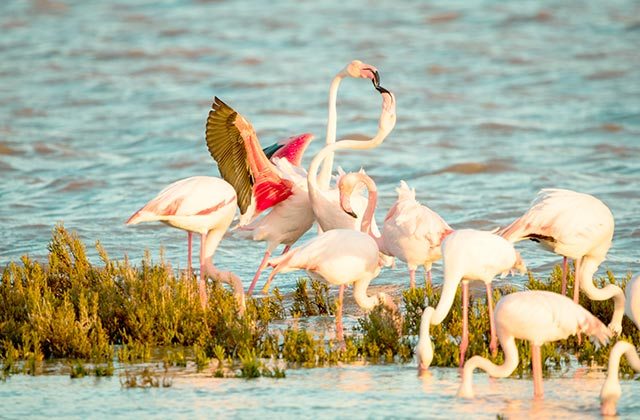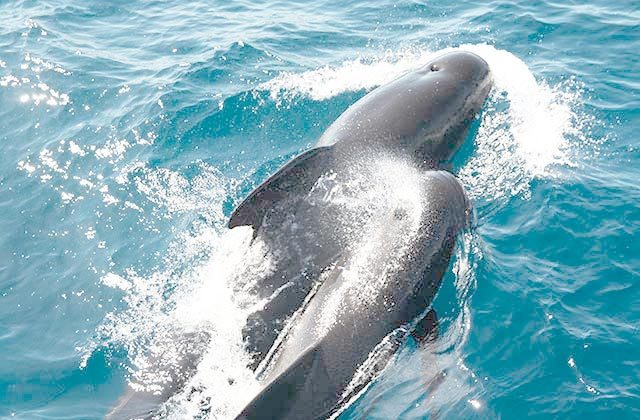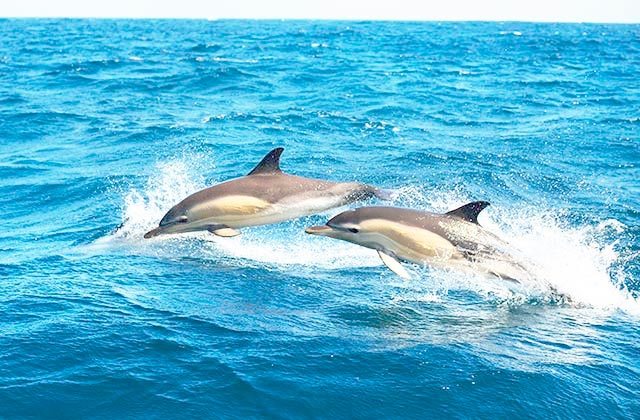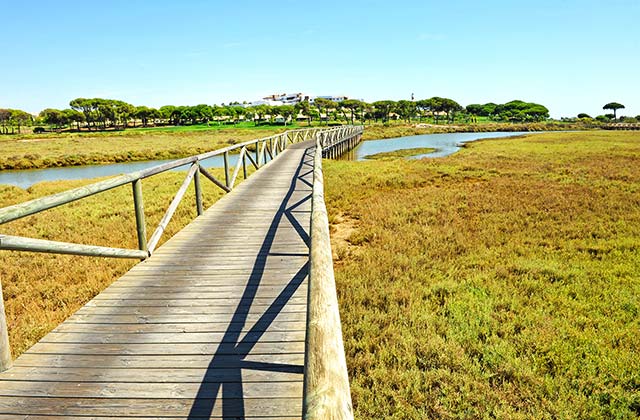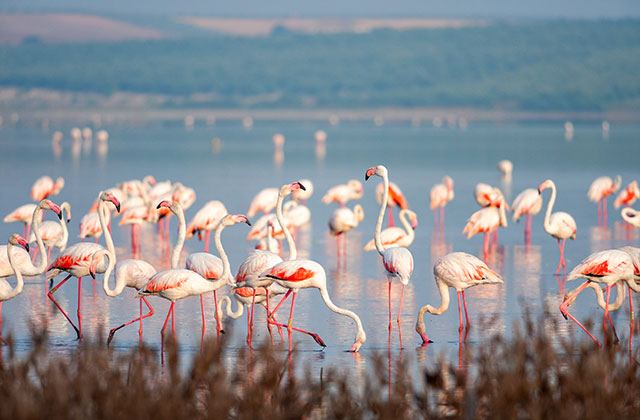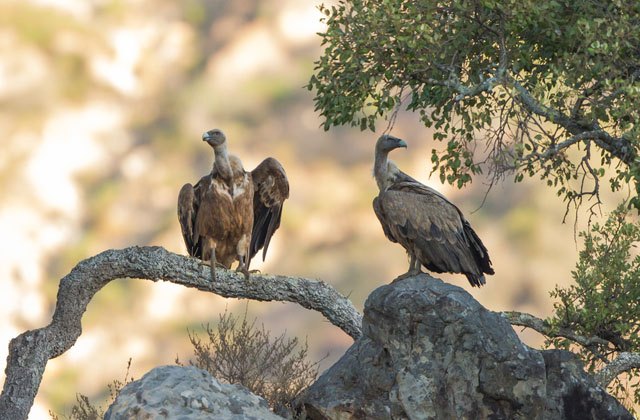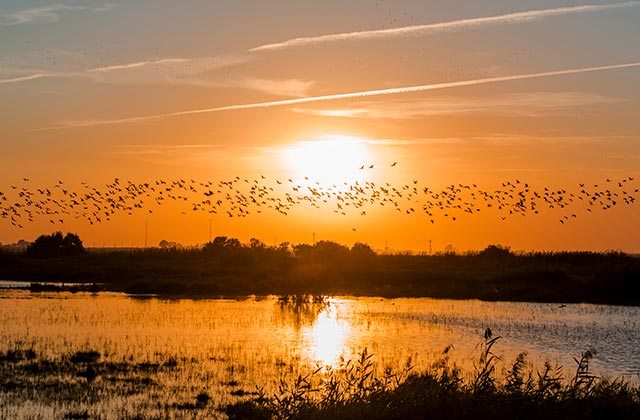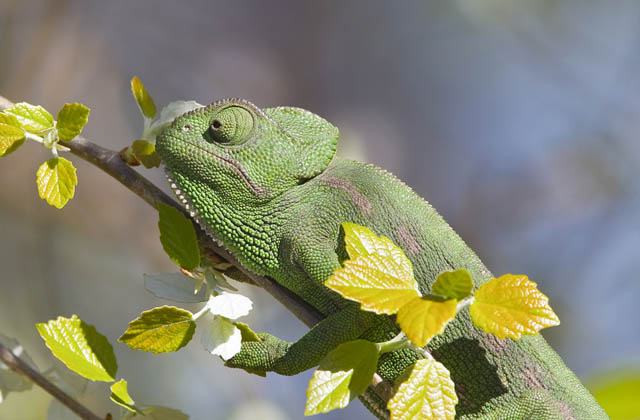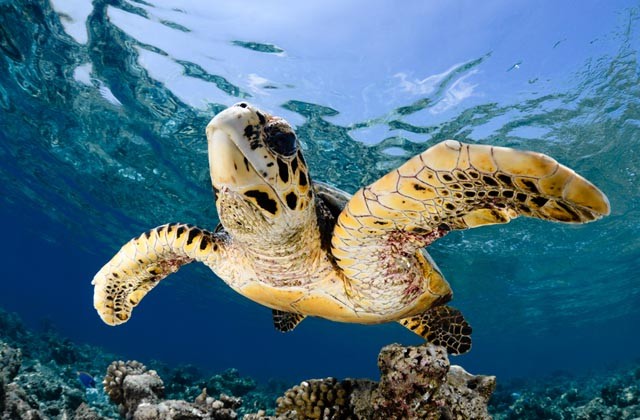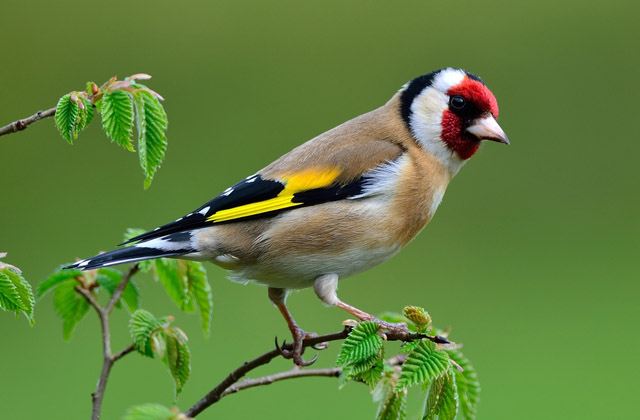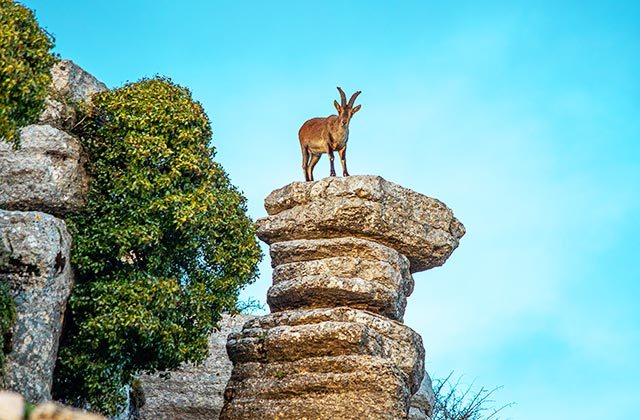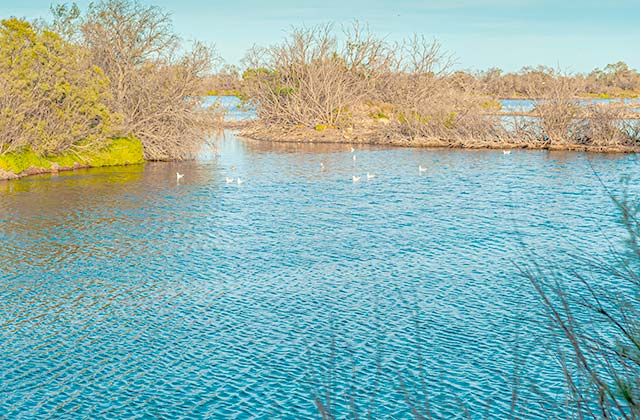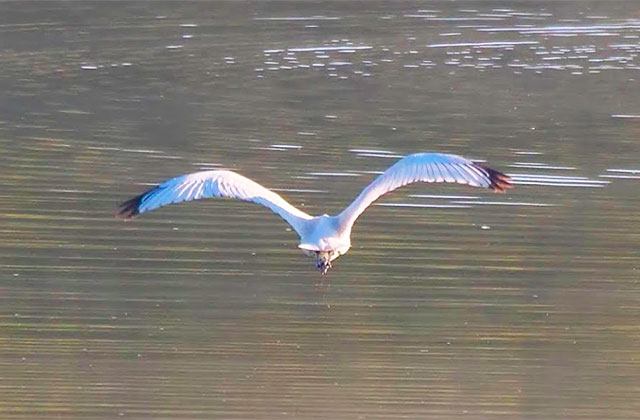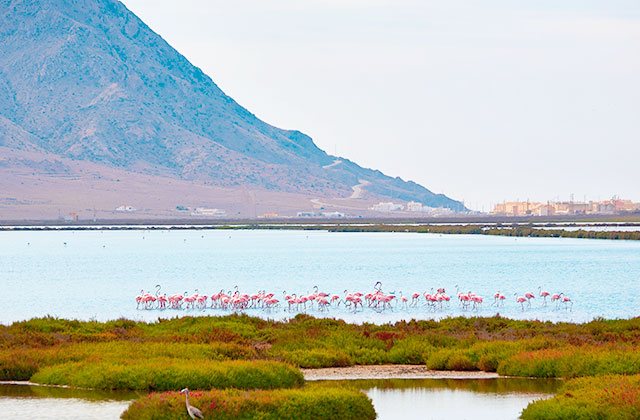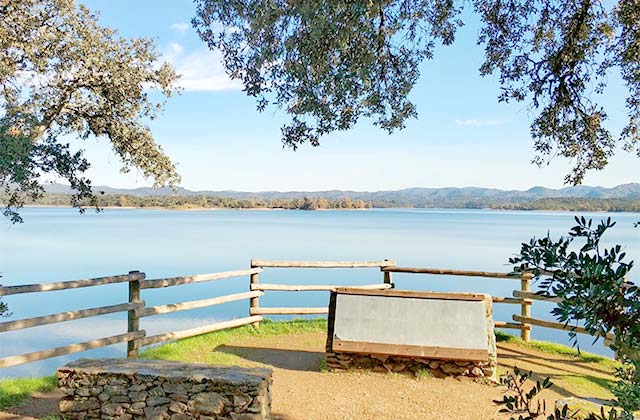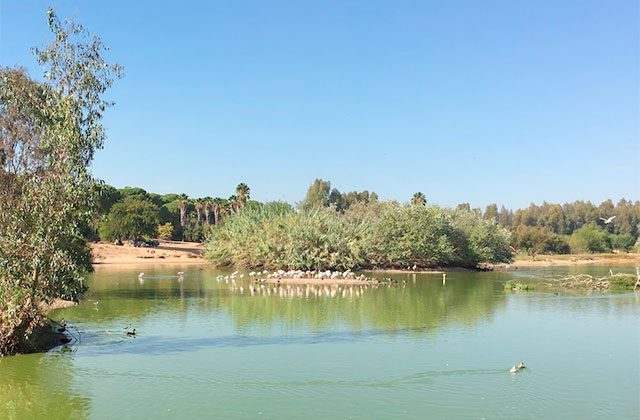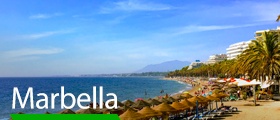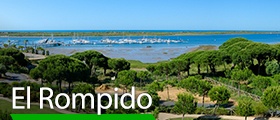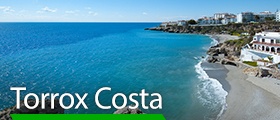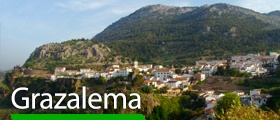
The 15 best places in Andalucia to observe and enjoy animals
On a good vacation, you cannot miss the activities that link you with nature. Just as important as visiting the monuments and the city, is getting to know the fauna and flora of the chosen destination. They are there, hibernating, moving from here to there in search of food and good temperatures. And thanks to its fabulous geographical location, the Iberian Peninsula is one of the best places for animal sightings. And if we go even further south, Andalusia and, specifically, its natural landscapes, stand as one of the most attractive destinations for wildlife watching in freedom. A place of residence and passage.
For all of the above, we propose a perfect plan so that you do not leave the south without sustainably enjoying its native animals. Take note and write down the best places in Andalucia for the sighting of species such as birds, cetaceans, etc….:
1. Tarifa (Cadiz)
The seabed in the Strait of Gibraltar holds a wealth of fauna, but its huge cetaceans are a sight to be seen by residents and visitors. If you are travelling through this area, make sure you do some of the tours offered on the sea in a boat where you can spot these animals. A guide usually accompanies tourists on the strait and gives information on each species you see. Besides the common dolphin, which can reach two metres in length, you can enjoy the company of striped and bottlenose dolphins, and the pilot whale.
2. Marbella (Málaga)
On the Costa del Sol, you can also experience seeing, and often touching, the dolphins, the residents of the Mediterranean Sea. This is a splendid activity to do with your children where contact with these species reinforces awareness and understanding of caring for the environment. These intelligent animals love to play next to the boat and this will get you some fantastic holiday photos.
3. Marisma del Piedras, El Rompido (Huelva)
The mouth of the Rio Piedras hosts the Marismas de Piedras y Flecha Nature Reserve in El Rompido. We recommend coming to this jewel of the Andalucian countryside where you can share space with a wide range of species. This is a great area for bird watching. The White Stork, Montagu’s harrier, stone curlew, the little grebe, the hoopoe, the spoonbill, the stilt, marsh harrier, the canastera, common tern, northern pintail, teals, the oystercatcher, the sandwich tern, the sandpiper, the plover, and the laughing gull are some birds found there. Other animals found here are the chameleon and marine animals such as fish (bream, sea bass, eels…), crustaceans and molluscs such as the clam and the grooved carpet shell.
4. Laguna de Fuente de Piedra (Málaga)
The Laguna de Fuente de Piedra Natural Reserve, Málaga, is the largest lagoon in Andalucia. It is an important place for nesting, wintering, and is a migratory stopover for many waterfowl which you can spot from observatories. It houses the largest colony of flamingos in the Iberian Peninsula and the second largest in Europe, which can be admired during the nesting period along with many other species, such as the tern, the laughing and slender-billed gulls, the Kentish plover, the avocet or the stilt. A perfect place to go with your children to enjoy this natural area.
5. Grazalema (Cádiz)
In the Sierra de Grazalema Natural Park, you can observe a great diversity of birds (over 200 species), including the majestic Griffon vulture, the booted eagle guard, the small and lively blue tits, wagtails and owls. This is a place of great natural beauty where you can fill your lungs with pure oxygen in the company of a varied and peculiar fauna, accompanied by large plant species such as the Spanish fir, a Mediterranean spruce which is unique in the world.
6. Doñana (Huelva and Cádiz)
Doñana is a protected natural area and its large expanse of marshes during winter hosts numerous species of waterfowl, typically up to 200,000 each year. Take the camera if you come here and prepare your five senses for the enjoyment of nature. If you love animals, you can find a wide range of both aquatic species and mammals. Look closely at the world’s most endangered feline on the planet, the Iberian lynx cat, and sharpen your eye to see the beauty of the flamingos, the short-eared owl, the heron, the snowy plover, the black kite, the shoveler or the great imperial eagle, among others.
7. Conil de la Frontera (Cádiz)
The chameleon likes to live in the coastal dunes and other dry places near the sea, always climbing brooms, pines, junipers, eucalyptus and other trees in general. If you decide to travel to Conil de la Frontera, you will enjoy seeing this cute animal around the many coves. Of course, if you want to see them, you have to be very alert because they change colour to camouflage themselves in the landscape.
8. Mijas Costa (Málaga)
If you want to enter the exciting world of marine turtles, come to the Costa del Sol, especially in the area of La Laja del Almirante in Mijas. The vast majority of these animals are in decline and in great danger of extinction in Andalucia. Among the species that can be found are the loggerhead turtle, green turtle, hawksbill, Kemp’s ridley turtle and leatherback turtle. In the Cala de Mijas, you can go diving to enjoy these and other animals.
9. La Axarquía (Málaga)
What is already known as “bird watching tourism”, i.e. tourism dedicated to bird watching, is developing dramatically in the region of Axarquia in Málaga. Predatory birds such as hawks and eagles as well as migratory and insectivorous birds, such as the thrush and the blackbird, can be found in these southern lands. You can also enjoy the songbird, the goldfinch, greenfinch or the linnet which will delight you with their singing in the middle of these natural surroundings. We recommend you make a route through the whitewashed villages that make up the region and the natural areas around about to enjoy these animals.
10. El Torcal de Antequera (Málaga)
Among the limestone rocks of El Torcal in Antequera, you can create the perfect plan for your family. This area gives you the chance to do several hiking trails, and on its karst slopes which arose from the sea, you can spot the famous mountain goat that grabs the stone and climbs majestically. In addition to observing these animals, when night falls, the stars take centre-stage and provide some unforgettable pictures.
11. Desembocadura del Guadalhorce Natural Site
The Desembocadura del Guadalhorce Natural Site is a protected environment that is included in the Network of Protected Natural Areas of Andalusia (RENPA) and is located just between the city of Malaga and Torremolinos. It is currently very visited by ornithology lovers, as it is located right on one of the most important migratory routes between Europe and Africa, as it provides the ideal resting and feeding area for migratory birds.
In this space you will find observatories that will shelter you from the wind and rain and also have two trails that allow visitors to enjoy the most important places for bird watching, the first is the Camino del río Viejo (with an approximate length of 1.6 kilometers) and the second is the Camino de la Laguna Grande (1.7 kilometers).
At the mouth of the Guadalhorce river, you can see specimens of a booted eagle, white-headed duck, stilt, bluethroat, osprey, Audouin’s gull, kingfisher, kentish plover, little bittern, or gannet.
12. Laguna del Rincón Natural Reserve
The Laguna del Rincón Nature Reserve is located in the Cordoba town of Aguilar de la Frontera, in the Llanos del Rincón. It is located on a gently sloping hill surrounded by olive trees and vines that have made them a very famous lagoon to achieve the recovery of the hollyhock when they were almost extinct (there were less than 50 pairs in Europe).
The lagoon is located under the migratory route that many birds follow to the African continent and northeastern Europe. Since 1989 it has been included in the Ramsar List of Wetlands of International Importance under the name “Lagunas del Sur de Córdoba”. Also, in 1983 the “Asociación Amigos de la Malvasía” made a crowdfunding to buy the lagoon. More than 2,000 people symbolically bought a part of the Rincón lagoon. Thanks to this, protection measures were imposed on it, even prohibiting the hunting of waterfowl, and several years later it was ceded to the Junta de Andalucía with the commitment to maintain it for future generations.
Among the species that breed in the Rincón lagoon, the most important are the White-headed Duck, great crested grebes, mallards, little grebes, red-crested pochards, moorhens, common pochards, eurasian coots, and western swamphen. The Rincón lagoon is also a wintering place for other aquatic species and waders: tufted ducks, common redshanks, shovelers, and stilts. Sporadically, the following can be observed: grey herons, little egrets, marsh harriers, and booted eagles.
13. The Cabo de Gata salt flats
The Cabo de Gata salt flats are located in the area of Almadraba de Moteleva. These salt flats are formed by shallow ponds and are one of the most representative examples of salt marshes converted by humans into salt marshes, and are the only ones still being exploited in eastern Andalusia.
In this natural space, the visitor will be able to enjoy more than 100 different species of birds. Of these species that can be seen, the most famous is the pink flamingo or common flamingo. It must be said that during their migration, especially in late July and early August, the colony of these birds can be formed by thousands of them.
14. El Embalse del Retortillo
The Embalse del Retortillo is located in the course of the river that bears his name, forming part of the municipalities of Puebla de los Infantes in Seville, within the natural park Sierra Norte de Sevilla and Hornachuelos in Cordoba. This natural area is surrounded by the typical Mediterranean forest of oaks and cork oaks, and its conservation is essential, as it regulates the hydrological cycle, increasing the quality and quantity of water, and also cushions the effects of possible floods.
From this natural place, you can enjoy fauna linked to lakes and rivers, such as cormorants, herons, and various species of ducks.
15. Cañada de los Pájaros
The Cañada de los Pájaros is a natural area located in the Sevillian area of La Puebla del Río, just 20 km from the capital. It was an old gravel pit with pools of water and abundant vegetation. A few years ago, it was restored by a couple of Spanish biologists, and thanks to this it has become an important wetland with great biodiversity, where we can find a significant number of endangered species.
If you decide to visit this impressive place you can enjoy the sighting of birds such as ducks, swans, storks, spoonbills, stilts, kingfishers, night herons, herons, flamingos, and endangered species such as black stork, teals, horned coot, mallard duck, slender-billed gull, and a long etcetera. There is also a colony of about 120 nests of white storks, most of them nesting next to black kites, something worth seeing.
The visit to this natural reserve can be free or guided and its price is 10 euros for adults, there are also discounts for children, and children under 5 years old do not pay.
So now you know: when on your holiday, make sure you do some kind of activity related to the Andalucian fauna because here you can see many exciting species at your fingertips.
11 natural environments you cannot miss in the South of Spain: Natural Parks of Andalucia
What are the natural wonders of Andalucia?
ACCOMMODATION
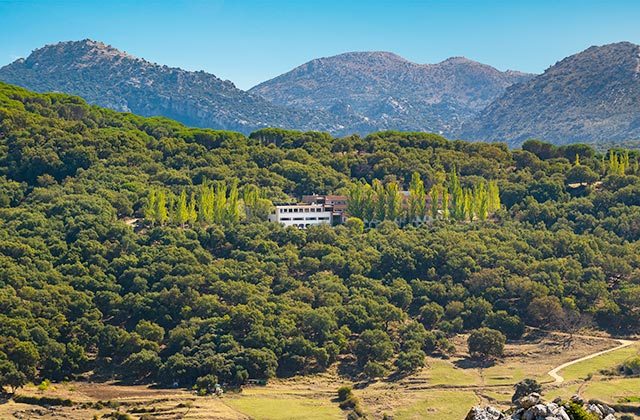
Hotel Fuerte Grazalema
If you are thinking of spending a vacation observing fauna and flora, we recommend that you stay at Fuerte Hoteles, since, apart from the privileged location of these establishments in terms of the enjoyment of natural spaces. The chain has establishments where you can enjoy, in addition to its services, the best of each point of the Andalucian geography. Its more than 60 years of experience are the best guarantee to dedicate your time to discovering these natural corners. Marbella, Conil, Grazalema, and El Rompido o Torrox are some of the places where you can find these incredible accommodations, close to all these points that we recommend.
